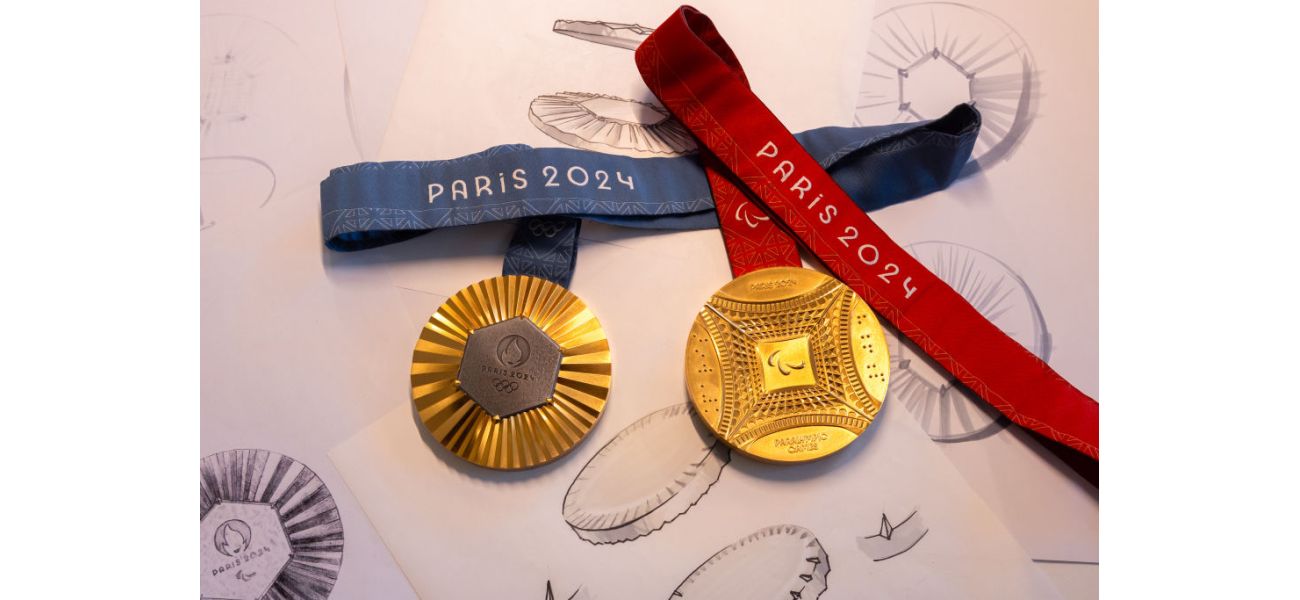How visually-impaired Paralympians determine their medal ranking.
We're going back to Paris!
August 29th 2024.

The city of Paris is buzzing with excitement as the Paralympic Games are underway, offering a unique opportunity to witness incredible sporting achievements. Athletes from all corners of the globe have gathered here to compete in the 2024 Games, which follow closely on the heels of the recently concluded Olympics. While both events celebrate a wide range of sports, the Paralympics have their own set of traditions and practices, especially when it comes to the coveted medals.
One question that often arises is how blind athletes are able to distinguish which medal they have won. The answer lies in the design of the medals themselves. Unlike the visually appealing Olympic medals, those at the Paralympics are designed to be texturally distinct from one another, making them easily identifiable by touch. In addition, each medal is engraved with braille, further aiding the visually impaired athletes in determining their achievement.
In the 2016 Games in Rio, the medals also featured a unique sound element to assist athletes with visual impairments. The gold, silver, and bronze medals each had a different number of steel balls inside, creating a rattle-like sound when shaken. The bronze medals had 16 balls, the silver had 20, and the gold had 28, making it the loudest. However, in the 2024 Games, this element has been removed from the design, but the use of braille remains in accordance with the regulations of the International Paralympic Committee.
But have you ever wondered what these medals are made of? The answer may surprise you. The Paralympic medals are made of the same materials as those used in the Olympics, and each medal in Paris contains iron from the iconic Eiffel Tower. This iron has been permanently removed from the tower during reconstruction work over the years and has been incorporated into the design of the medals. The hexagonal shape of the iron pieces pays tribute to the shape of France, giving the medals a unique and meaningful touch.
On the official Olympic website, the Games explain the significance of this design choice, stating that it symbolizes the nation's commitment to hosting an extraordinary Olympics and Paralympics. The iron, stripped of its "Eiffel Tower brown" paint, is returned to its original color and placed in the center of the medal, imprinted with the emblem of the Paris 2024 Games. This piece of heritage perfectly complements the gold, silver, and bronze core of the medal.
What are your thoughts on the design and materials used in the Paralympic medals? Share your views in the comments below. As we continue to witness incredible feats of strength and determination at the Paralympic Games, let us also appreciate the thought and effort put into creating these unique and meaningful medals.
One question that often arises is how blind athletes are able to distinguish which medal they have won. The answer lies in the design of the medals themselves. Unlike the visually appealing Olympic medals, those at the Paralympics are designed to be texturally distinct from one another, making them easily identifiable by touch. In addition, each medal is engraved with braille, further aiding the visually impaired athletes in determining their achievement.
In the 2016 Games in Rio, the medals also featured a unique sound element to assist athletes with visual impairments. The gold, silver, and bronze medals each had a different number of steel balls inside, creating a rattle-like sound when shaken. The bronze medals had 16 balls, the silver had 20, and the gold had 28, making it the loudest. However, in the 2024 Games, this element has been removed from the design, but the use of braille remains in accordance with the regulations of the International Paralympic Committee.
But have you ever wondered what these medals are made of? The answer may surprise you. The Paralympic medals are made of the same materials as those used in the Olympics, and each medal in Paris contains iron from the iconic Eiffel Tower. This iron has been permanently removed from the tower during reconstruction work over the years and has been incorporated into the design of the medals. The hexagonal shape of the iron pieces pays tribute to the shape of France, giving the medals a unique and meaningful touch.
On the official Olympic website, the Games explain the significance of this design choice, stating that it symbolizes the nation's commitment to hosting an extraordinary Olympics and Paralympics. The iron, stripped of its "Eiffel Tower brown" paint, is returned to its original color and placed in the center of the medal, imprinted with the emblem of the Paris 2024 Games. This piece of heritage perfectly complements the gold, silver, and bronze core of the medal.
What are your thoughts on the design and materials used in the Paralympic medals? Share your views in the comments below. As we continue to witness incredible feats of strength and determination at the Paralympic Games, let us also appreciate the thought and effort put into creating these unique and meaningful medals.
[This article has been trending online recently and has been generated with AI. Your feed is customized.]
[Generative AI is experimental.]
0
0
Submit Comment





